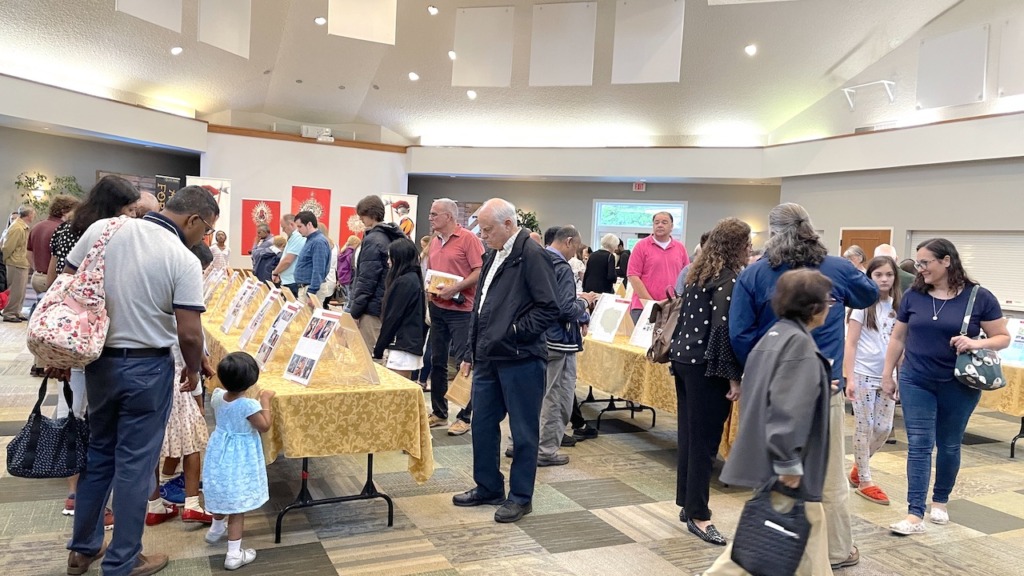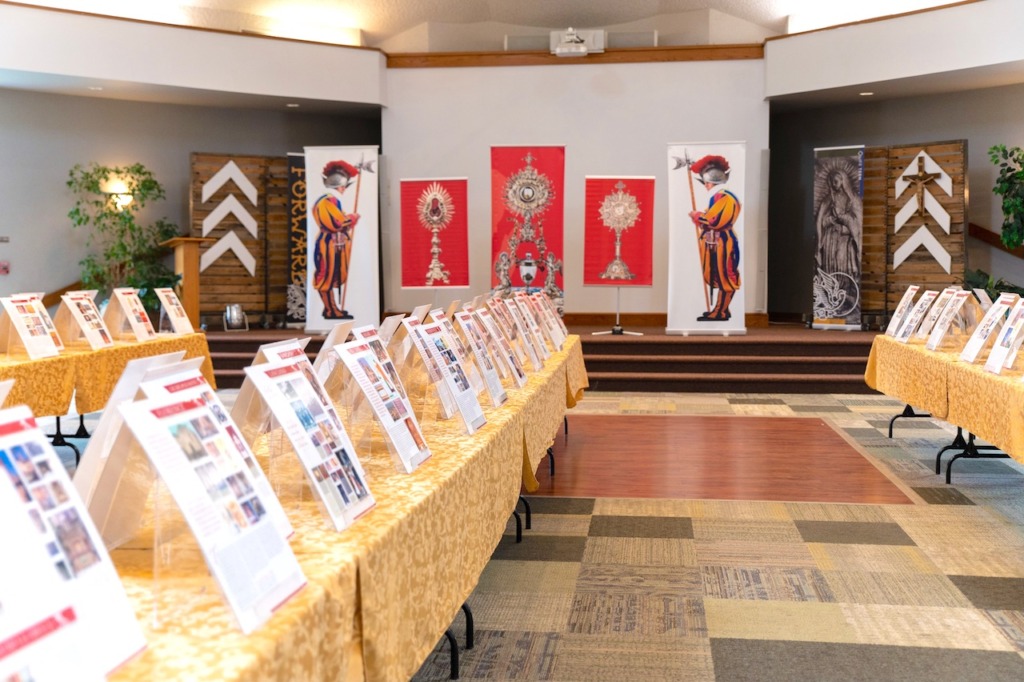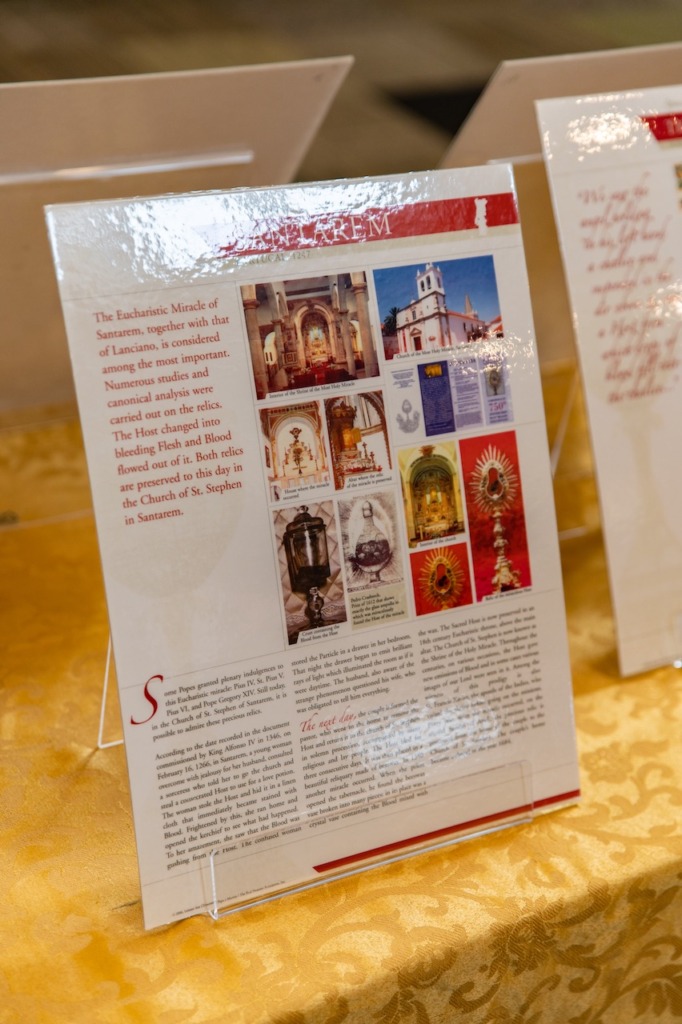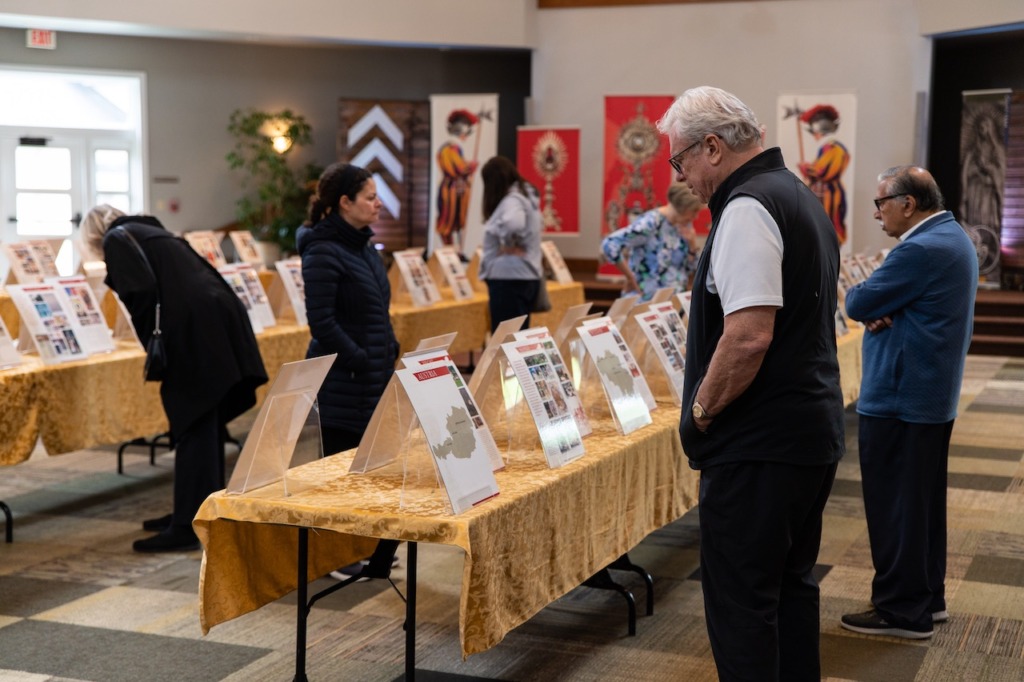Like many teenagers, Carlo Acutis loved technology, often spending hours playing video games or scrolling through the internet. However, he also shared a profound relationship with God and was deeply committed to his faith from a young age.
He volunteered in the community, prayed the rosary daily, knelt before the tabernacle every Sunday, and dreamed of visiting holy sites around the world. At the same time, he was battling leukemia, and his dreams of travel remained just dreams.
Confined to his home in Milan, Italy, he decided to create a website cataloging every single reported eucharistic miracle in the world, complete with photographs and historical information detailing each event.
This massive undertaking took four years to complete. The online catalog served as his passport, and he visited dozens of cities with the click of his mouse.
He died in 2006 at the age of 15, his body buried in the town of his favorite saint, Francis of Assisi.
Priests in Italy printed and assembled Carlo’s catalog and launched a traveling exhibition of the eucharistic miracles, which has now reached hundreds of places over five continents, including the Diocese of Richmond.
The Eucharistic Miracles of the World exhibit was displayed at Saint Michael the Archangel, Richmond, April 29-30.

Approving eucharistic miracles
According to Catholic World Mission, “A eucharistic miracle involves the body and blood of the Eucharist taking on biological qualities of Christ’s blood, flesh, or both.”
This includes blood or bodily tissue appearing on the Host; the Host emitting a bright light or pulsing like a beating heart; wine turning into blood; the Eucharist surviving traumatic events such as fire, flood, or physical attack; and other occurrences.
There have been hundreds of incidents reported over the centuries, but not all are approved as miracles. After a miracle claim is made, a lengthy approval process begins. An investigation is opened, which may take months to years to complete.
Though each case is different, the investigation may include questioning witnesses, examining the Eucharist, and scientifically testing samples before the Vatican will approve of a eucharistic miracle.
While many reported incidents have been deemed fake by the Church, more than 100 eucharistic miracles have been approved, and each has its own display panel in the traveling exhibition.

Hope for eucharistic revival
Deacon Andy Cirmo was instrumental in bringing the exhibition to Saint Michael. Before moving to Virginia, he served as a deacon in the Chicago area, where the exhibition had traveled before.
At the event, he was moved by the unifying force of the Eucharist for Catholics around the world, despite cultural and language barriers between countries. Once Deacon Andy established himself at Saint Michael, he suggested bringing the exhibition there, and pastor Dan Brady swiftly agreed.
“As the source and summit of our faith, yet an incredible truth that is doubted by so many, I believe that seeing an exposition of these miracles will have a very positive effect,” Deacon Andy said. “I pray that this experience can go a long way to help those who doubt.”
Doubt is a common theme among these miracles, with parishioners and even priests often struggling with the idea of transubstantiation, where the bread and wine turn into the body and blood of Christ after consecration.
Even though this is a central tenet of the Catholic faith, the idea of the bread and wine becoming Jesus’ actual body and blood is hard for many to believe. That’s where the miracles come in.
Timothy McAndrew used to doubt. He and his wife Jenny were both born into Catholic families but were never religious. Together, they felt called to become closer to God, leading them to regular confession, prayer, and parish involvement – eventually becoming regional stewards of the exhibition.
They made the Eucharist the center of their lives and the lives of their five children, one who is now a Carmelite nun. Their home is in Ohio, but they travel on weekends to share the ways they were moved by the exhibit. Richmond is the farthest they have journeyed with the exhibit.
“You may wonder if I always believed in my heart that this was truly Jesus hidden in this little tiny Host,” McAndrew said. “I would say in my head yes, in my heart no. But over the last ten years of traveling with the miracles and spending many hours in adoration with our Lord, now my heart says yes. It is truly Jesus.”
Miracle after miracle
With the melodic sound of Gregorian chants gently playing on endless loop in the background, the exhibit takes visitors on a world tour.
A volcano erupted on the Caribbean island of Martinique 121 years ago, its lava swiftly flowing towards the village of Morne-Rouge. Many of the villagers gathered in the church, praying to be spared. The priest bestowed a general absolution and distributed the Eucharist.
It was then that parishioners claimed to see an image of the Sacred Heart on the Host. The apparition lasted several hours while the volcano raged on, and the village survived the eruption despite other towns being destroyed.
On another island in the same year, a similar miracle was recorded. On the island of La Reunion, a priest saw a halo glowing around the Host, and then a human face with a crown of thorns. He said he couldn’t believe his eyes, and abruptly left the altar during Mass.
He asked several others to go to the tabernacle to find out if they observed anything unusual. They all returned, claiming to see Jesus in the Host as well. The image later changed to a crucifix and then disappeared after being witnessed by thousands.
In 1345, days before Easter, a man in Amsterdam named Ysbrand Dommer was suffering from extreme illness and asked his priest for the Eucharist. He promptly vomited the Host, the pieces of which were thrown into the fireplace. The next morning, Ysbrand awoke completely healed and claimed to see the Host intact and floating under a glowing light.
Though the Host was then given to the priest, it reappeared three times over Dommer’s fireplace. His house was converted to a chapel, which was lost to fire more than a century later. The Host, however, is said to have survived the blaze. The miracle is still celebrated each year with a procession through the city.
In several countries, there are stories of doubting priests having their faith restored by a eucharistic miracle. In Austria, one priest saw wine turn to blood and start boiling in its chalice. Other priests claimed to see Jesus’ face, or the Host pul- sating like a heart.
In Lanciano, Italy, a priest who had been internally questioning the sacredness of the Eucharist during Mass saw the Host become flesh and the wine become blood. Though this happened back in 750, a scientific examination of the remnants took place more than 1,200 years later in 1970.
According to the doctor who conducted the tests, the Host contained myocardium (heart) tissue and the wine contained human blood, specifically blood type AB, known as the “universal receiver” blood type. The flesh was found to be living tissue and not that of a corpse, something that baffled many.
In 1973, the World Health Organization appointed a separate commission which conducted hundreds of tests, all of which corroborated the original doctor’s findings with no medical explanation.
More recently, in 1996, a church in Buenos Aires became the site of a eucharistic miracle. A consecrated Host had fallen to the floor, and the priest followed procedure and put it in a glass of water to dissolve. The priest checked on it days later, only to find it bloody and no longer looking like a regular Host, but like human flesh.
The auxiliary bishop was notified and an investigation was conducted over the next several years. The Host was tested and found to contain living heart muscle, just like the one in Lanciano. Human blood was also found, again type AB like in Lanciano. Additional tests were performed years later with the same result.
The auxiliary bishop involved was none other than Father Jorge Mario Bergoglio, though he is better known by his current title: Pope Francis.
Today, the 15-year-old boy who started it all is well on his way to sainthood, with Pope Francis beatifying Carlo in 2020.
While he was still alive but suffering greatly, Carlo said, “To always be close to Jesus, that’s my life plan.”
Though his life was cut short, he stuck to this plan. Now in death, he is helping others do the same.
To learn more about Carlo and his catalog, visit https://carloacutis-en.org/.
To learn more about the many miracles that inspired Carlo, visit http://www.miracolieucaristici.org/en/Liste/list.html.

